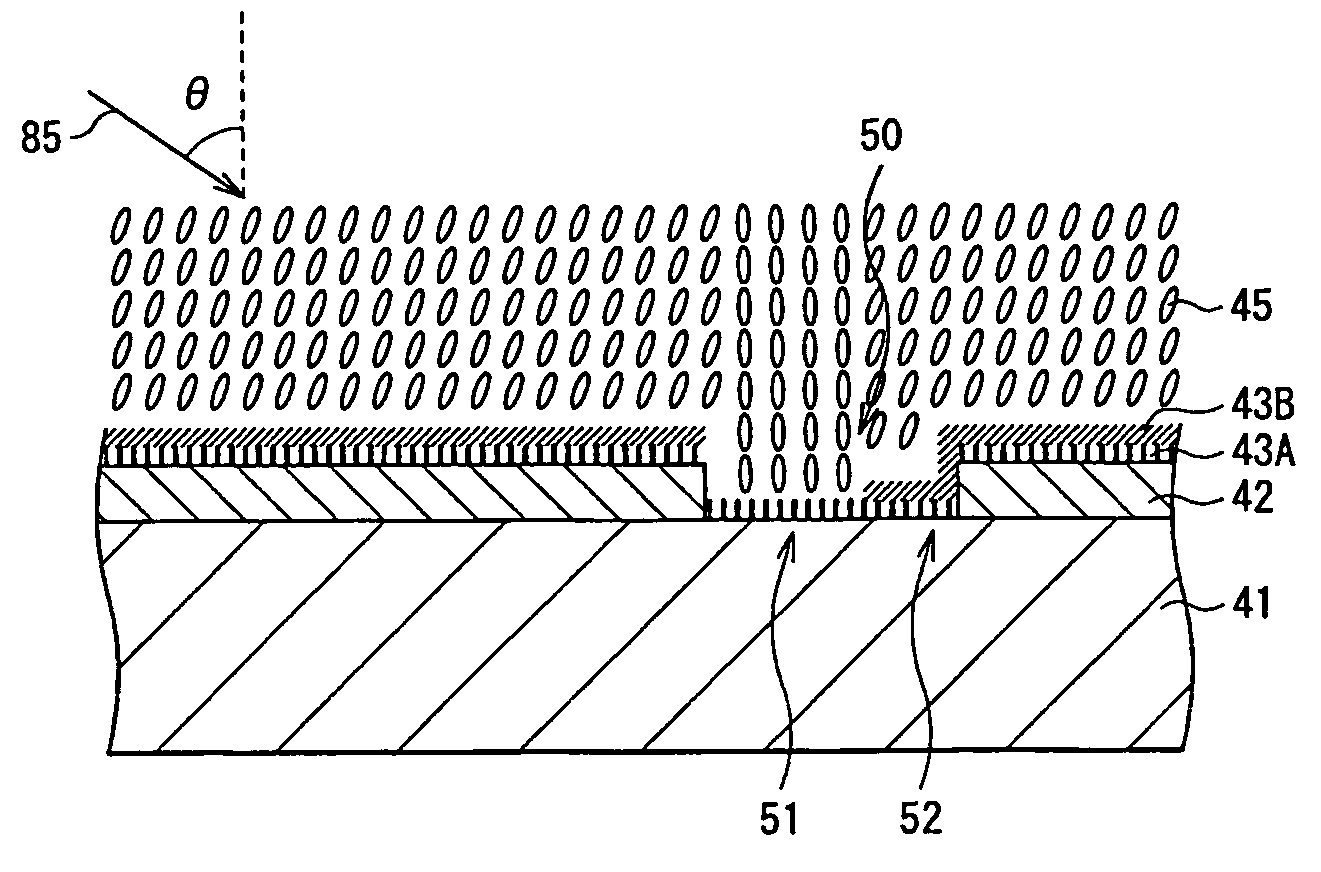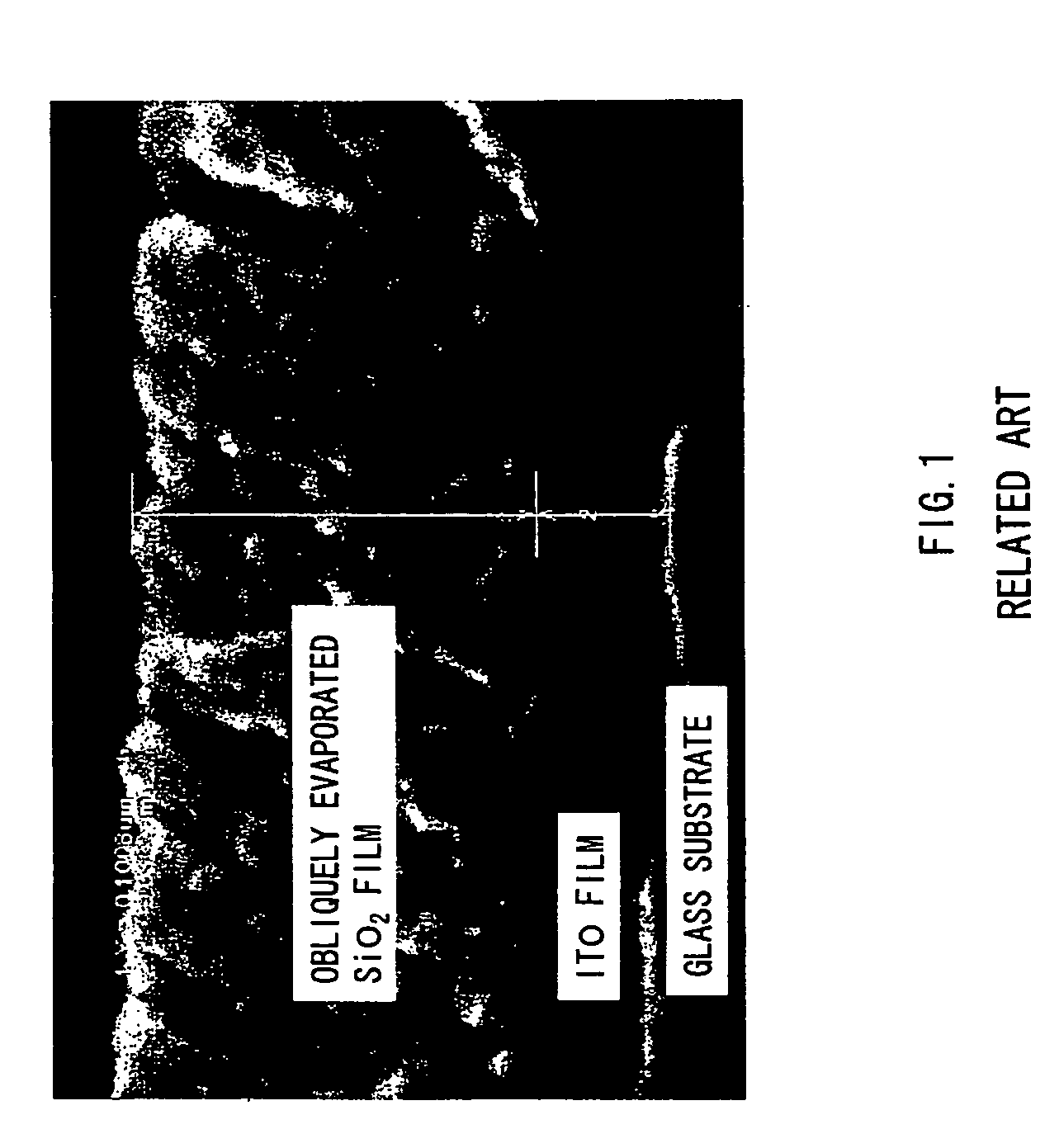Reflective liquid crystal display device having obliquely evaporated alignment film on vertically evaporated film, method of manufacturing the same, and vertically aligned liquid crystal display unit
a liquid crystal display and vertically aligned technology, applied in non-linear optics, instruments, optics, etc., can solve the problems of organic alignment film degrade, uneven contrast, burn-in, etc., and achieve the effect of long-term reliability
- Summary
- Abstract
- Description
- Claims
- Application Information
AI Technical Summary
Benefits of technology
Problems solved by technology
Method used
Image
Examples
examples
[0123]Next, specific characteristics of the reflective liquid crystal display device according to the embodiment regarding burn-in in a long-term drive will be described referring to examples. Before describing the examples, as comparative examples, the characteristics of a reflective liquid crystal display device of the related art will be described below.
examples 1 and 2
[0127]Next, Examples 1 and 2 will be described below. Basically, test samples of the reflective liquid crystal display device were formed according to the same method and the same specifications as those in the above comparative examples, except for the alignment film on the pixel electrode. More specifically, after a glass substrate on which a transparent electrode was formed and a silicon drive substrate on which an aluminum electrode was formed as a reflective pixel electrode were cleaned, an alignment film was formed through evaporation by a method described below, and then a vertical liquid crystal material with negative dielectric anisotropy Δ∈ manufactured by Merck was injected between the substrates to form a reflective liquid crystal display device as Example 1. The specifications of the silicon drive substrate was the same as those in the above comparative examples, so a pixel pitch was 9 μm and the width of a groove between pixels was 0.6 μm. A reflective liquid crystal d...
examples 3 through 6
[0137]Examples 3 through 6 will be described below. Basically, test samples of the reflective liquid crystal display device were formed according to the same method and the same specifications as those in the above comparative example. More specifically, after a glass substrate on which a transparent electrode was formed and a silicon drive substrate on which an aluminum electrode was formed as a reflective pixel electrode were cleaned, the alignment film was formed on each substrate through evaporation by a method which will be described later, and after that, a vertical liquid crystal material with negative dielectric anisotropy Δ∈ manufactured by Merck was injected between the substrates so as to form each of the test samples of the reflective liquid crystal display device. The specifications of the silicon drive substrate were the same as those of the above comparative examples, and the pixel pitch W2 was 9 μm, and the width of a groove between pixels, that is, the inter-pixel s...
PUM
| Property | Measurement | Unit |
|---|---|---|
| pretilt angle | aaaaa | aaaaa |
| incident angle | aaaaa | aaaaa |
| size | aaaaa | aaaaa |
Abstract
Description
Claims
Application Information
 Login to View More
Login to View More - R&D
- Intellectual Property
- Life Sciences
- Materials
- Tech Scout
- Unparalleled Data Quality
- Higher Quality Content
- 60% Fewer Hallucinations
Browse by: Latest US Patents, China's latest patents, Technical Efficacy Thesaurus, Application Domain, Technology Topic, Popular Technical Reports.
© 2025 PatSnap. All rights reserved.Legal|Privacy policy|Modern Slavery Act Transparency Statement|Sitemap|About US| Contact US: help@patsnap.com



